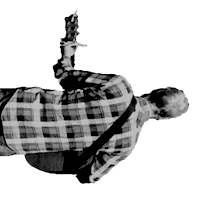Computer History
My Notes
Sources Include:
Turing and the Computer: The Big Idea - by Paul Strathern
Computer: A History of the Information Machine - By Campbell-Kelly and Aspray
The abacus was invented 4000 BC in China and near East for calculating, computing. The machine helped count but the operator had to have the program in his head.
1623: William Shickard develops a calculating clock to help astronomers with planetary position calculation. Its input was numbers.
1630s: Slide-rule invented by William Oughtred, allows multiples and divisions to be calculated more easily.
Blaise Pascal designs and accounting machine where numbers are entered in. Wheels and cogs are capable of addition and subtraction or, up to eight digits. Very complex and brilliant, but limited by technology of the day.
1673: Gottfried Leibniz takes Pascal’s calculating machine farther. The machine did not catch on, but it was brilliant.
Joseph Marie jacquard produces a weaving machine that can be programmed with punch cards. It works so well that factory workers riot and destroy the machines.
Tables are recorded and printed to speed up Matt operations. They’re done by people sometimes error prone, mostly due to printing errors. Computers are a bunch of people working to provide the mental labor of complex operations.
Born 1791, Charles Babbage is often seen as the father of the modern computer. He combines calculating machines, programming and computable numbers.
1823: Babbage creates Difference Engine Number One, which does complex decimal operations from input. The most brilliant design yet, but very costly. His Difference Engine Number Two was never funded but it lays out the basic features of the modern computer.
1854: George Boole publishes his investigation of the laws of thought which out lays out Boolean algebra. All logic can be reduced to Boolean operators such as & or and not.
Data processing and batch processing follow Adam Smith and become a division of mental labor. Banking and telegraph technologies realize it somewhere to have a central place to do things once. Rather than take every single transaction new.
Herman Hollerith combines Babbage and Boole’s ideas, creates binary machine that can read punch cards with up to 288 holes and store information. It calculates the 1890 US census in six weeks. The previous 1880 census took three years. His company becomes IBM.
Information technology, data processing become a worthwhile effort.
Hollerith incorporated as TMC, Tabulating Machine Co, which eventually becomes IBM, selling office machinery with skilled salesmen, super successful.
American offices come along after England and make use of latest office machinery such as typewriters.
- Typewriters improve documentation of info
- Filing systems improve info storage
- Adding machines process info
1920s and 30s, IBM and Remmington Rand compete to make the best punch card machines for accounting, computing.
Models are used to solve problems, calculate engineering feats but it’s a lot of hard work to construct a new model for each problem.
Alan Turing designs and operates Colossus Machine, a computer that breaks Nazi encoded messages during WWII. It’s built with tubes and does character scanning. Turing believes computers can be thinking machines, encode thought. After WWII he designs Ace: Automatic Computing Machine. Then in 1948, he designs Madam: Manchester automatic digital machine. Turing used madam to try to explain nature, the universe in terms of numbers. To crack the code.
Von Neumann… (to be continued)
